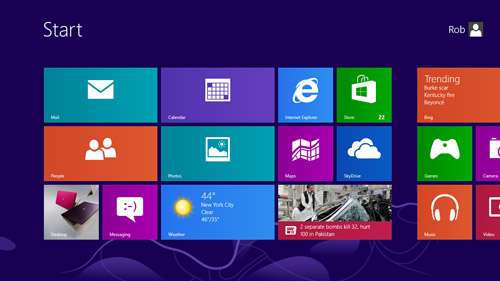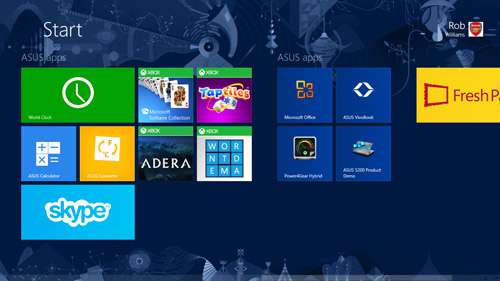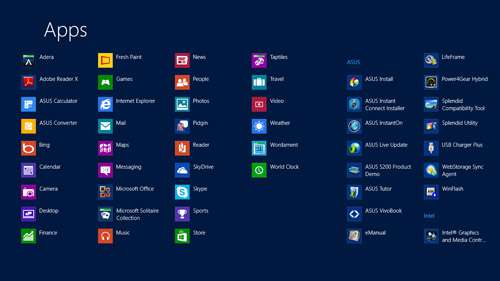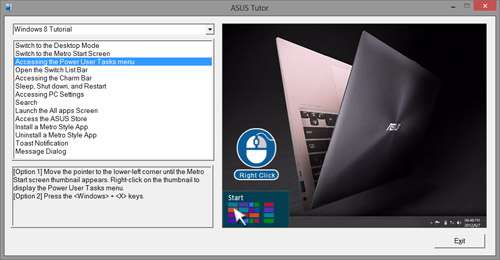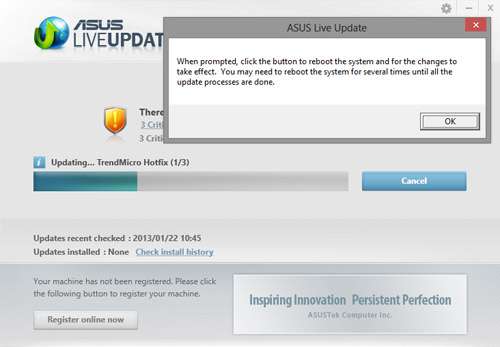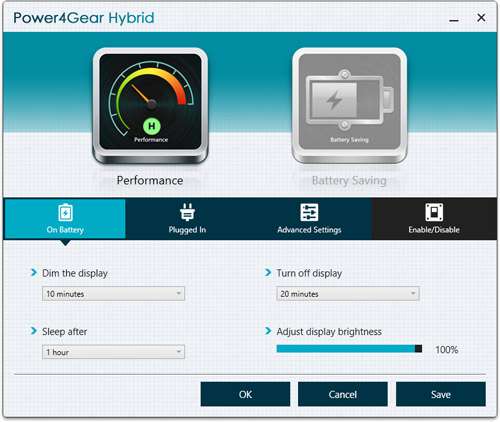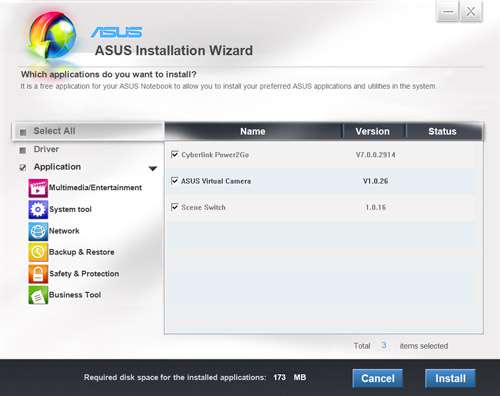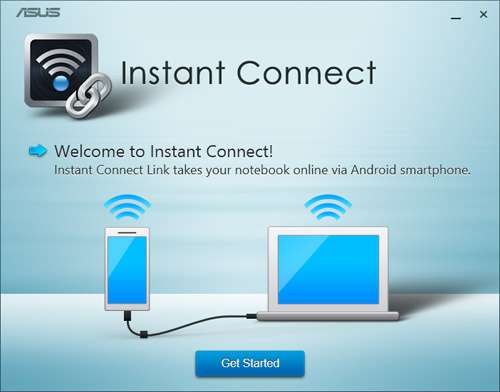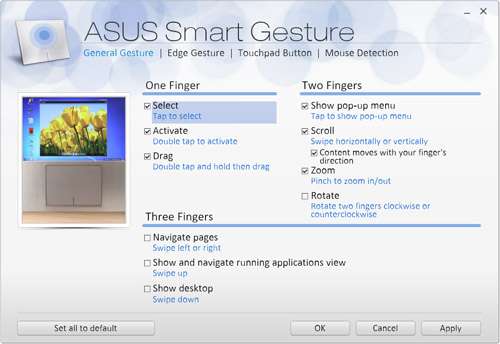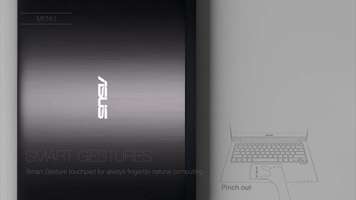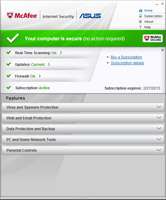- Qualcomm Launches Snapdragon 4 Gen 2 Mobile Platform
- AMD Launches Ryzen PRO 7000 Series Mobile & Desktop Platform
- Intel Launches Sleek Single-Slot Arc Pro A60 Workstation Graphics Card
- NVIDIA Announces Latest Ada Lovelace Additions: GeForce RTX 4060 Ti & RTX 4060
- Maxon Redshift With AMD Radeon GPU Rendering Support Now Available
ASUS VivoBook X202E 11.6-inch Notebook Review
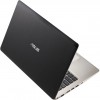
It might not be an Ultrabook, but for what ASUS’ VivoBook X202E offers, that might not matter. Instead of focusing on performance, ASUS has concentrated on the feature-set, overall design and the aesthetics. Then it piled on a touchscreen for good measure. Sounds good for a $500 notebook, so it’s time to see if it impresses.
Page 2 – A Look at the X202E’s Software
Alongside the release of Windows 8 came the need for companies like ASUS to re-think the way they manage software on their products. Take bundled software, for example. It’s hardly been atypical to see vendors load the desktop up with shortcut icons for applications it believes you should notice right away, but with Windows 8, the desktop is no longer the focus, and the clean aesthetics of the “Modern UI” simply don’t favor such clutter. We’ll talk about what can result from this in just a short bit.
Also changed is the way companies are able to handle restoring the PC to a factory-fresh state. Previously, companies would employ their own, sometimes not-so-elegant solutions. However, because Windows 8 includes similar functionality, some companies, including ASUS, have merged the two recovery solutions together. The result is a recovery solution that runs through Microsoft’s Windows 8 solution, but is tweaked for ASUS’ purposes – aka: to install the bundled software and drivers.
For the purpose, this particular notebook has three partitions sitting next to the other two that are for personal use. These consist of a 300 MB “EFI” partition and dual “Recovery” partitions – one weighing in at 300 MB, the other at 20 GB. The price we pay for being able to recover our PCs the easiest way possible.
With that sorted out, let’s move along and boot the X202E up:
It’s long been difficult for companies to differentiate their OS installs from the competition, and Windows 8 does nothing to remedy that. In fact, things have been made even worse, thanks to the absolute lack of flexibility of the Start screen. Windows 8 on this notebook looks little different than it does on any other notebook.
The first hint of uniqueness can be seen when the Start screen is scrolled to the right. Here, we can see some pre-installed Xbox Arcade games along with ASUS World Clock, Calculator and Converter. These are simple apps that do as their name implies, with Converter being the most interesting as it covers weight, length, volume, temperature, data storage and area. Want to know how many bytes make up 56 GB? This app will quickly tell you the answer.
Being a notebook review, I don’t want to harp too much on the OS aspect of things, but a personal beef of mine with Microsoft’s latest OS hit me in the face when navigating the X202E’s software. Unlike the classic Start Menu, the Start screen doesn’t support folders for tiles. This leaves companies the option of relegating certain applications to the All Apps screen, creating their own faux folder application that acts as a launcher (which rarely look good) or litter the Start screen with a bunch of tiles that most people will never use. The choices here are not exactly great.
For this notebook, ASUS took the route of hiding most of its own software inside of the All Apps menu. For those new to Windows 8, this menu is not easy to stumble on – especially on a touch device. That leads me to another problem: Microsoft doesn’t explain in any real detail how to use the Start screen, save for two of the most basic explanations at install time. There’s no tutor of any sort, despite there being 10 or so functions that those using the Start screen should know about.
Here’s where things become ironic. As seen in the shot above, ASUS has bundled in an app called “ASUS Tutor” which, to me, represents what Microsoft itself should have included with Windows 8. The irony stems from the fact that one thing this program teaches you is how to go to the All Apps menu in order to access apps like it and others. Ignoring the fact that ASUS should have included a tile shortcut for this on the main Start screen, let’s take a quick look at what we’re dealing with:
It looks simple, but looks can be deceiving. I’ve been using Windows 8 since October, and despite being experienced, I decided to humor myself and go through the tutorial here to see if I could learn anything new. I did. The tip shown above shows you how to access a menu by putting your mouse to the bottom left-hand corner of the screen and then right-clicking. This menu has many different shortcuts to various parts of the system, including Programs and Features, System, Device Manager and so on. To access these things before, I’ve had to go to the Start screen, type in a few letters, click on “Settings” and then the program. Yet – here’s a method that’s about 5x quicker that Microsoft itself couldn’t even be bothered to tell people.
I’m sure someone will comment and tell me that it is mentioned somewhere, but the problem is that it’s not obvious enough. Simply put, ASUS has designed a fantastic tutor program that teaches you the basics very quickly. Microsoft should take note.
Let’s take a look at the other software, shall we? One sticking point for me across all of the software was with the “Live Update” tool. This tool automatically starts after a fresh install and downloads updates from the Internet – it’s completely typical for any pre-built PC. This one, however, manages to hang almost definitively – something I’ve experienced on two different current-gen ASUS notebooks.
You’ll note the pop-up box in the shot above – it tells you to click “OK” to reboot the system whenever the updates are finished. The problem is, these updates never managed to finish for me. The shot you see above was actually captured after an hour of it sitting on that exact spot. The kicker: the updates actually are applied, as a reboot will continue on with the next one. For some reason, the software doesn’t cleanly wrap one update up to go onto the next. I’m willing to bet that this is an issue that will be remedied in time.
ASUS has long prided itself on its power-efficient products, and a popular stature for its notebooks has been “Power4Gear”. This is in effect a simplfied power manager tool, though the profiles created have been fine-tuned by ASUS itself. You’re able to fine-tune them further with the Power Options tool in Windows, or adjust simple things with ASUS’ tool.
It’s important to note that Power4Gear overrides the default power options in Windows, so if you need anything specific changed, you’ll need to edit the special Power4Gear profiles and not those defaults (Performance, Balanced, et cetera). If you choose one of the standard Windows power modes, Power4Gear will simply default back to its own after a reboot. Thus, if you use Power4Gear, you must stick with it.
“ASUS Installation Wizard” speaks for itself. It lists all of the official software that ships with the notebook and allows you to both uninstall or install any and all of it. From what I can tell, this is not an updater – those duties would be left to the Live Update tool mentioned above.
Of all the software bundled with the X202E, “Instant Connect” is the one with the least amount of documentation. It looks to be tethering software for certain phones to help get around the need to pay for the feature through your carrier. Perhaps this is the reason ASUS is playing it cool? At the moment, only Samsung’s Galaxy S2, Galaxy S3, Galaxy Note and Galaxy Nexus are supported along with ASUS’ own PadFone and MEMO ME171. As we have none of these devices on-hand, this is one feature we were unable to test out.
Along with ASUS Tutor, ASUS Smart Gesture is a great program for teaching you shortcuts that can be done on the touchpad or touchscreen. It’s highly recommended that you refer to this tool, as it will make your experience with the notebook all the more better.
Other software includes a semi-interactive demo typical of what you’d see at the stores, Microsoft Office 2010 and McAfee Internet Security. The latter two are trialware, good for 30 days a piece, with McAfee in particular proving to be an absolute nag until you uninstall or activate it (the latter will still deliver an occasional pop-up at the bottom).
Trialware bloat is kept to a minimum for the most part, and ASUS’ own software proves to be quite nice. It still boggles my mind as to why the company didn’t at least pin its Tutor and Smart Gesture to the Start screen, however, as it’s the first thing anyone new to Windows 8 should be looking at. They’re simple tools, but can teach you things that are not common-sense.
Support our efforts! With ad revenue at an all-time low for written websites, we're relying more than ever on reader support to help us continue putting so much effort into this type of content. You can support us by becoming a Patron, or by using our Amazon shopping affiliate links listed through our articles. Thanks for your support!




